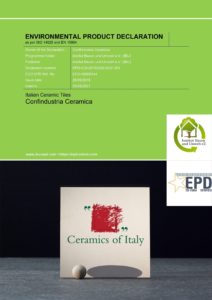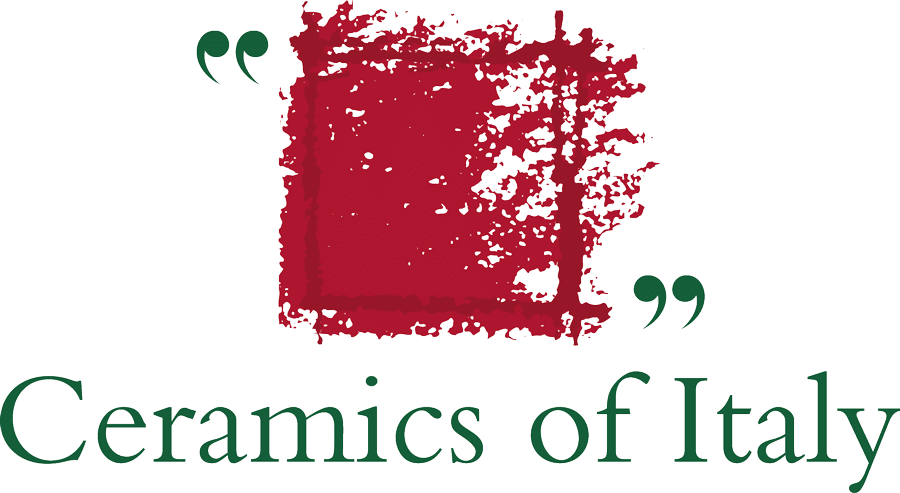Confindustria Ceramica has been promoting the EPD (Environmental Product Declaration) amongst its member companies in order to communicate the green performance characteristics of ceramic surfaces that serve to earn credits in building sector rating schemes.
What is an EPD?
An EPD is an independently certified and verified environmental declaration that provides clear and comparable information regarding the environmental performance of a product throughout its entire lifetime in accordance with standard ISO 14025. Put simply, an individual EPD contains general information on the product and the production process, an analysis of performance and environmental impact based on a Life Cycle Assessment, as well as additional background environmental information.
Why develop an EPD?
The Italian ceramic tile industry has introduced this additional communication tool in response to the challenges and opportunities of sustainability as a strategic factor for the international competitiveness of the sector.
In 2015, Confindustria Ceramica, in collaboration with Thinkstep, conducted an industry-wide EPD study for the benefit of its member companies. Ceramic tile manufacturers can use the industry-average declaration obtained by the association to produce EPDs for specific products based on industry-average figures, a procedure that saves both time and money.
The steps for producing an EPD are set out clearly in a document called Product Category Rules (PCR). Each PCR refers to a product category, thereby guaranteeing a uniform procedure and consequently comparable results.
Importance of the EPD for designers and architects
The EPD is an effective technical and informative tool that enables building industry professionals to purchase products based on criteria of sustainability, thereby adding consistency and value to an architectural project in terms of smart and green building principles. The EPD promotes design choices based on reliable and precise criteria deriving from a rigorous and externally-verified calculation procedure. The EPD also integrates seamlessly with the latest building industry rating schemes which serve to certify the sustainability of buildings according to a series of qualitative and quantitative criteria.
The benefits of the EPD for architects
 The potential benefits that an EPD offers for ceramic tiles in a building project depend on a range of factors and vary according to each international Green Building rating and certification scheme.
The potential benefits that an EPD offers for ceramic tiles in a building project depend on a range of factors and vary according to each international Green Building rating and certification scheme.
In the LEED (Leadership in Energy and Environmental Design) standard, a building project earns a credit if at least 20 EPD certified building products from at least 5 different suppliers are chosen. In this case a single credit is granted.
The figure of 20 products should be calculated as follows: 1/4 of a product in the case of an externally-verified LCA; 1/2 of a product in the case of an industry-average EPD; 1 product in the case of a specific EPD.
In the BREEAM (Building Research Establishment Environmental Assessment Method) protocol, a project is granted 1 additional credit if at least five products are EPD certified, while 1 extra credit plus the qualification of “Exemplary Level” is given to projects with at least ten EPD-certified products.
In the German DGNB (German Sustainable Building Council) system, the EPD data for individual products facilitate the calculation of the building’s overall LCA, which contributes 13.5% to the total score of the certification.
In the French HQE (Haute Qualité Environnementale) standard, the EPD applies to both residential and non-residential buildings and is taken as an “access requirement” for “Performing” and “High Performing” levels.
Download here the EPD for Italian ceramic tiles.
Transparency summary
 The Transparency Summary is a document that summarises the industry-average EPD and provides a clear and intuitive guide to the environmental impact of Italian ceramic tiles over their entire life cycle, from cradle to grave. It highlights their characteristics of hygiene, health and absence of volatile organic compounds harmful for indoor environments and provides information on energy, origins of the raw materials used, reuse of materials and production waste, and end-of-life product recyclability.
The Transparency Summary is a document that summarises the industry-average EPD and provides a clear and intuitive guide to the environmental impact of Italian ceramic tiles over their entire life cycle, from cradle to grave. It highlights their characteristics of hygiene, health and absence of volatile organic compounds harmful for indoor environments and provides information on energy, origins of the raw materials used, reuse of materials and production waste, and end-of-life product recyclability.
Download the transparency summary here.
September 2017



 Architects
Architects


